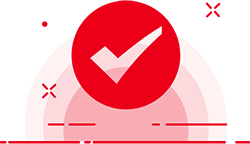 EN
EN

 EN
EN

Industry Insights
Aug. 06, 2024
Keywords: Kings FGF Printing, FGF Printing applications, Kings FGF 3D Printer, Kings 3D Printer, Sculpture 3D Printing, FGF Applications, Kings FGF sculpture Printing
The sculpture industry is an indispensable part of modern society, and it includes mall decoration, art exhibitions, large-scale event publicity, cartoon characters, landmark buildings, and so on. With the further development of 3D printing, most people have chosen to use 3D printing to make sculptures. Then the question is, what are the differences between 3D printing and traditional sculpture production methods? What are the advantages? This article will analyze the FGF 3D print features owned by Kings, hoping to give you some inspiration in front of the screen.

First - The Creative Process
Traditional sculpture: the artist conceives the shape and details of the sculpture by hand-drawing sketches or directly carving on the materials. The process is long and the revision process consumes a lot of physical strength and materials because of the material characteristics and creative tools.
FGF 3D printed sculpture: artists use 3D modeling software to transform ideas into digital models, which can be designed and modified more accurately.
The Technical Characteristics
Traditional sculpture:
1. High technical requirements: artists are required to have superb manual skills and rich experience.
2. Long creative cycle: it often takes a long time from design to finished product, especially for large sculptures.
3. Strong personalization: each work is unique and has distinct personality characteristics.
3D printed sculpture:
1. High degree of freedom in design: complex geometric shapes and internal structures can be realized, providing artists with more creative space.
2. Rapid prototyping: significantly shorten the creative cycle and quickly transform digital models into physical objects.
3. High precision: After the milling in FGF2420 and 2435, the printed sculpture will have high precision and detail expression.

The Application of Materials
Traditional sculpture: The choice of materials is relatively limited, mainly stone, wood, metal, clay, foam, etc. Different materials have unique textures and expressive qualities, but their inherent properties impose limitations.
3D printed sculpture: the materials are widely selected, mainly various plastic particles, which are recyclable and have strong physical properties. And you can choose suitable materials according to the needs of the works, and even realize mixed printing of multiple materials.
Cost-effectiveness
Traditional sculpture: the cost is affected by many factors such as material price, labor cost, and time cost. The commonly used materials will cause a lot of waste in the production process and cannot be recycled, such as foam and wood carving. The production cycle of medium and large sculptures is long and requires a lot of manpower, time, and venue fees.
3D printed sculpture: the waste rate of materials used is extremely low and can be recycled. Only one person is needed to control the machine, and the operation is simple and the labor cost is low. The machine has a small floor space, integrated structure, and low site cost.
Environmental impact
Traditional sculpture: waste and noise pollution may be produced during the production process. The mining and processing of some materials (such as stone) may cause damage to the environment.
3D printing sculpture: The process mostly uses nontoxic, organic, low-carbon, green, and recyclable materials. The production process is efficient and environmentally friendly, which helps to reduce the generation of waste and pollutants.
To sum up, 3D printing has the advantages of low cost, less environmental pollution, short production cycle, and creative features that fit the modernization process, which is bound to better meet the commercial and environmental needs of modern sculpture industry. With the continuous progress of technology and the reduction of cost, the application prospect of 3D printed sculpture in the field of sculpture art will be broader.
For any quotations about our FGF 3D Printers, contact us here!
Author: Alyssa Han/ Christine
Related Articles
Kings 3D’s Self-Developed PA12 Powder Passes EU Food Contact Compliance Tests
We’re proud to announce that Kings 3D’s self-developed nylon powder material – PA12 – has successfully passed selected tests for food contact suitability, compliant with the following key European regulations.
Nov. 11, 2025
Main Torch Tower of the 15th National Games: A Masterpiece by Kings 3D!
On the evening of November 9, 2025, the 15th National Games of China opened grandly at the Guangzhou Olympic Sports Center. As the torchbearer ascended with the “Bloom” torch in hand and ignited the 16.5-meter-high main torch tower, the ceremony reached its climax.
Nov. 10, 2025
Kings 3D, a leading provider of industrial 3D printing solutions, is excited to announce its participation in Formnext 2025, the world’s leading exhibition for additive manufacturing and industrial 3D printing.
Oct. 29, 2025
Related Products
Applications
Contact Us


Thank You!
Your message has been successfully sent. We’ll get back to you shortly.